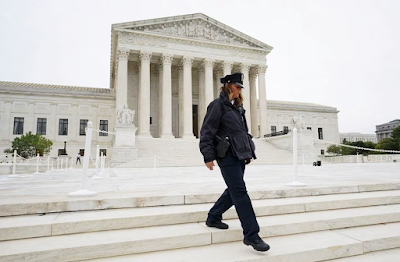Effective January 1, 2024, AB 2188 amends Government Code section 12954 (Fair Employment and Housing Act “FEHA”) to prohibit an employer from discriminating against an employee or applicant for cannabis use off the job and away from work. SB 700 further amends section 12954 to prohibit employers from requesting information from an applicant for employment relating to the applicant’s prior use of cannabis. This legislation establishes enhanced protections for marijuana use by elevating its use to a protected status under FEHA, which protects the right and opportunity of all persons to seek, obtain, and hold employment without discrimination based upon protected statuses. This legislation has created uncertainty as to whether law enforcement officers and their employing agencies are covered by this legislation.
The statutes cover state and local employees in California with no express exclusion of peace officers. The only professions expressly excluded from the statute are employees in the building and construction trades. (Gov. Code, § 12954(c).) Thus, the exclusion of building and construction employees creates a presumption that peace officers are not excluded unless subject to the other exemptions related to federal legal requirements.
The bill also excludes applicants or employees hired for positions that require a federal government background investigation or security clearance in accordance with regulations issued by the United States Department of Defense pursuant to Part 117 of Title 32 of the Code of Federal Regulations, or equivalent regulations applicable to other agencies. (Gov. Code, § 12954(e).)
Some officers assigned to federal law enforcement task forces must undergo a federal government background investigation and are likely exempt, but most do not. Before hiring an officer, Penal Code sections 1029(a)(3), (a)(11), (c), and 1031(c) require a search of the National Decertification Index of the International Association of Directors of Law Enforcement Standards and Training and, investigations of officers’ military discharge and local and nation criminal records fingerprint files. However, none of these investigations appears to be “a federal government background investigation,” which is not defined in the statute. Ultimately, this question will have to be resolved by clean up legislation or the courts.
The bill also provides that it does not preempt state or federal laws requiring employees to be tested for controlled substances, including laws requiring employees to be tested as a condition of receiving federal funding or federal licensing-related benefits. However, state and federal law generally does not require California peace officers to be tested for cannabis. Further, any drug testing policy would have to be negotiated with the officers’ labor representatives.
Officers may nevertheless be effectively excluded from the protections of these bills if they are required to lawfully possess a firearm as a condition of their employment. 18 U.S.C. section 922(g)(3) prohibits the receipt or possession of a firearm by anyone "who is an unlawful user of or addicted to any controlled substance (as defined in section 102 of the Controlled Substances Act (21 U.S.C. 802)." Cannabis is classified by the federal government as a schedule I substance and therefore a user of cannabis is banned from possessing a firearm. However, possession of firearms issued by and for the use by a public entity are not covered by this federal law. Thus, the Act covers officers who use their personal weapons on duty, but not firearms owned and issued by the employing agency.
Further, when anyone buys a firearm from or through a firearms retailer, they are required to answer questions on the federal “4473” form. In California, there are other state forms that must also be completed, including the Dealer Record of Sale (DROS) form. The 4473 form specifically asks if the firearm purchaser is an “unlawful user” of marijuana. Even if marijuana use is legal in a particular state, it is still illegal under federal law. In order to be truthful, the individual must answer “yes” to this question if they use marijuana. The 4473 form must be signed under penalty of perjury. Committing perjury is a crime. Federal law also expressly prohibits knowingly making any false statement on the 4473. Doing so is punishable by up to ten years in prison and up to a $250,000 fine. 18 U.S.C. § 924(b).
The Ninth Circuit has held that the firearm prohibition on cannabis users is constitutional, even in the context of those with medical marijuana cards, explaining that “these laws will sometimes burden—albeit minimally and only incidentally—the Second Amendment rights of individuals who are reasonably, but erroneously, suspected of being unlawful drug users. However, the Constitution tolerates these modest collateral burdens in various contexts, and does so here as well.” Wilson v. Lynch (9th Cir. 2016) 835 F.3d 1083, 1094-95.
However, Wilson was decided before New York State Rifle & Pistol Association, Inc. v. Bruen (2022) 142 S.Ct. 2111 and did not consider whether the ban was unconstitutional under our historical tradition of firearm regulation. Rather, it proceeded under the now-defunct tiered-scrutiny approach that gave the government far more deference. Notably, Hunter Biden's legal team cited Bruen defending against similar charges by arguing the framers of the U.S. Constitution were well aware of problems caused by intoxication but there is no history of preventing substance abusers from acquiring firearms. Post-Bruen, the lower courts are invalidating these prohibitions, but until the Ninth Circuit reverses Wilson or the Supreme Court addresses the issue, the efficacy of the federal firearm prohibitions are uncertain at best.
In conclusion, the application of these laws to peace officers remains hazy. Given the uncertain legal ramifications at stake, officers should exercise caution all until clean up legislation is enacted or the courts provide greater guidance. If peace officers are determined to be covered, public safety unions cannot agree to waive FEHA protections for their members. This legislation goes far beyond legalization by elevating marijuana use to protected civil right. Ultimately, the employing agencies and individual officers must comply with all applicable laws.














